Site atelier Coffee Flux
Informations générales
| Localisation : | Costa Rica |
| Longitude/latitude : | -83.72861(West) / 9.93833° North |
| Altitude moyenne : | 1000 m |
| Année de démarrage : | 2009 |
| Projets : | EU-CAFNET ; ANR-Ecosfix ; ANR-MACACC |
| Page web : | https://www6.montpellier.inra.fr/ecosols/Recherche/Les-projets/CoffeeFlux |
Contact :
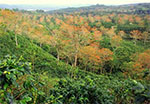 CATIE 7170,
CATIE 7170,
Apartado 3,
Cartago, Turrialba, Turrialba
30501 Costa Rica
COSTA RICA
Cell : (506) 86 05 09 85
Cell : +55 (11) 83 07 20 18
Fax. (506) 25 56 30 18
Environnement
| Climat | |
| température moyenne annuelle : | 19.5°C |
| précipitations moyenne annuelle : | 3014 mm |
| Végétation | |
| espèce dominante : | Coffea arabica var. Caturra (understorey) |
| autres espèces : | Erythrina poepiggiana (shade tree) |
| Sol | |
| type de sol : | Andosol | matériel parent : | volcanic ashes |
| texture : | sand (58%) ; clay (14%) ; Silt (27%) with allophanes |
Recherche / objectifs
Aims and Philosophy of the CoffeeFlux Collaborative Platform
The aim of Coffee-Flux is to assess carbon, nutrients, water and sediment Ecosystem Services (ES) at the scale of a coffee agroforestry watershed. Observation, experimentation, modelling and remote-sensing are combined, collecting data and calibrating models locally, then upscaling to larger regions. The project has been running continuously since 2009, in order to encompass seasonal and inter-annual fluctuations of coffee productivity and ecosystem services.
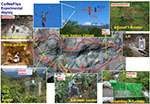 Coffee-flux is a platform where collaborative research on coffee agroforestry is promoted: data are being shared between collaborators and positive interactions are enhanced. The philosophy is to concentrate several investigations on one specific site and for several years, to share a useful common experimental database, to develop modelling and to publish results in highly-ranked scientific journals. Applied research is also highly
encouraged (e.g. C-Neutral certification, NAMA, Agronomy, etc.). Coffee-Flux benefits from infrastructure, easy access from CATIE (Centro Agronómico Tropical de Investigación y Enseñanza) and very good security, ready to welcome complementary scientific investigations and collaborations. The project is wide open to complementary projects, scientists and of course to students. The core data base is for sharing.
Coffee-flux is a platform where collaborative research on coffee agroforestry is promoted: data are being shared between collaborators and positive interactions are enhanced. The philosophy is to concentrate several investigations on one specific site and for several years, to share a useful common experimental database, to develop modelling and to publish results in highly-ranked scientific journals. Applied research is also highly
encouraged (e.g. C-Neutral certification, NAMA, Agronomy, etc.). Coffee-Flux benefits from infrastructure, easy access from CATIE (Centro Agronómico Tropical de Investigación y Enseñanza) and very good security, ready to welcome complementary scientific investigations and collaborations. The project is wide open to complementary projects, scientists and of course to students. The core data base is for sharing.
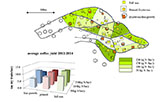
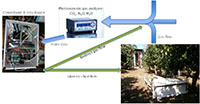
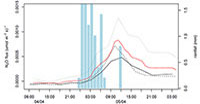
 Accès réservé
Accès réservé